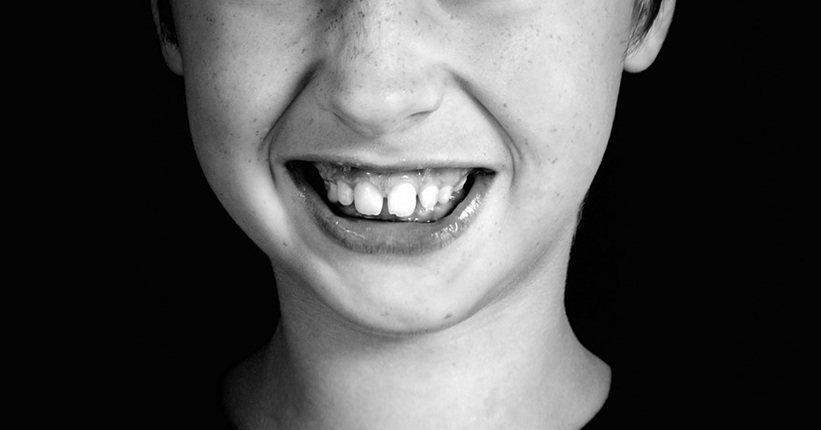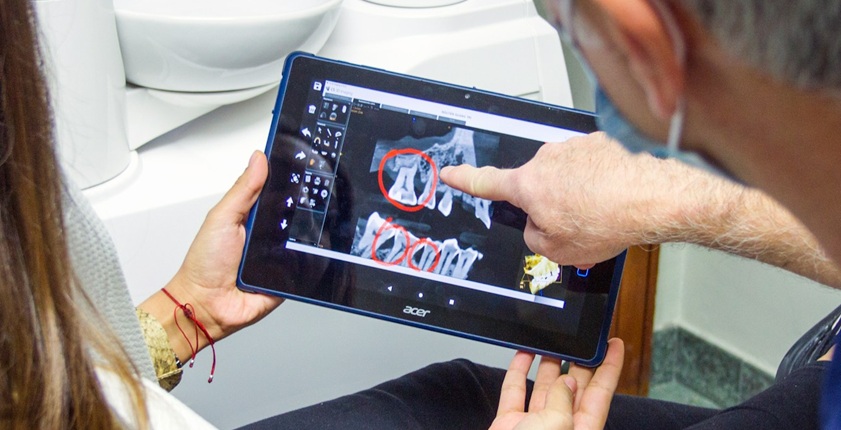
How to eliminate the gap between the teeth?
The gap between the teeth, or diastema, is a problem that can affect not only the aesthetics of a smile but also the comfort of speaking and general well-being. Although for some it is a characteristic element of appearance, many patients choose to remove it for aesthetic or health reasons. Where does the gap between the teeth come from? What are the available methods for the elimination of diastema? What can untreated diastema lead to?
What is diastema, the so-called gap between the teeth?
Diastema is a gap or gap between the teeth, most often seen between the upper ones (incised medial teeth). It can occur in both children and adults, and its causes vary — from genetic conditions to incorrect attachment of the frenulum of the upper lip to habits such as thumb sucking or pressure of the tongue on the teeth. Diastema can only be treated as an aesthetic issue, but in some cases it can lead to problems with the correct bite or pronunciation.
Causes of diastema – where does the gap between the teeth come from?
The gap between the teeth can have various causes – both anatomical and acquired. One of the most common is the incorrect attachment of the frenulum of the upper lip, which can “pull” the gum and prevent the incisors from approaching. Often diastema also occurs due to a disproportion between the size of the teeth and the dental arch – if the teeth are too small in relation to the space in the mouth, gaps form between them. Other causes include malocclusion and abnormal habits (e.g., thumb sucking and sticking the tongue too hard on the teeth), as well as the loss of lateral teeth, which leads to tooth displacements. Diastema may appear temporarily in children in the process of replacing the dentition.
Types of diastema – what are the types of gap between the teeth?
Diastema can be divided into several types depending on its cause and characteristics.
1) Physiological diastema – occurs in children in the phase of permanent replacement of the milk teeth and usually closes spontaneously with the eruption of the canines.
2) True diastema — it has an anatomical basis; most often it is caused by an incorrect attachment of the frenulum of the upper lip, which prevents the incisors from approaching.
3) Pseudal diastema — arises due to missing teeth, usually lateral incisors, whereby the middle incisors move to the sides, forming a cleft.
4) Pathological diastema — may be the result of periodontal disease, parafunctions (e.g., pressing with the tongue) or malocclusion. Each type of diastema requires an individual diagnosis in order to select the appropriate treatment.
Is diastema inherited?
Yes, diastema can be inherited. The tendency to form a gap between the teeth is often due to genetic characteristics, such as the ratio between the size of the teeth and the width of the jaw or the way the frenulum of the upper lip is attached. If one or both parents have diastema, it is more likely that the child will also have it. In these cases, diastema can be present from early childhood and persist or increase with age. Although genetic factors are important, it is worth remembering that the development of diastema can also be influenced by environmental factors and habits, so early diagnosis and dental control are crucial.
What does untreated diastema lead to?
Untreated diastema, especially if it is the result of anatomical defects or an abnormal bite, can lead to various health and functional problems. It can cause speech disorders, especially splenienia, since the gap between the teeth affects the correct articulation of the vocal cords. Over time, further tooth shifts can occur, which worsen the aesthetics of the smile and can lead to overloads in the bite. In the case of diastema caused by periodontal disease, the lack of treatment can contribute to aggravation of inflammation, weakening of the teeth and their loosening. In some people, the gap between the teeth also causes psychological discomfort and decreased self-esteem, especially when it affects the front teeth and is clearly visible.
Can the gap between the teeth get bigger?
Yes, the gap between the teeth, or diastema, can enlarge over time – especially if it is not diagnosed and treated properly. The widening of the gap can be the result of progressive malocclusion, abnormal habits (such as sticking your tongue against your teeth), as well as periodontal diseases that lead to teeth loosening and shifting. Also, the absence of adjacent teeth (e.g., loss of lateral incisors or premolars) can cause teeth to migrate and increase the space between individuals. Therefore, even a seemingly minor diastema should be evaluated by a specialist to prevent it from deepening and the associated aesthetic and functional problems.
When should we treat diastema?
Treatment of diastema is worth considering when the gap between the teeth exceeds 2 mm or when it noticeably increases in size. Such a condition may indicate problems with bite, incorrect attachment of the frenulum or periodontal diseases that require the intervention of a specialist. If the cleft is small — less than 2 mm — and is not accompanied by other complaints, there is usually no need for treatment. However, any change in the alignment of the teeth should be consulted with a dentist in order to prevent more serious consequences in time.
How to eliminate the gap between the teeth?
There are several effective methods of treating diastema, and the choice of the right one depends on the cause of its formation, the size of the gap and the patient's expectations. Here are the most commonly used ways to eliminate the gap between the teeth:
1) Orthodontic treatment
Most often used for larger diastema and malocclusion. It consists of the installation of a permanent appliance or orthodontic overlays (e.g., Invisalign), which gradually move the teeth, closing the gap. Treatment can last from several months to a dozen, depending on the severity of the defect.
2) Bonding (aesthetic restoration of teeth)
It is a quick and minimally invasive method, which consists of applying a composite material to the teeth that optically closes the gap. The effect is immediate and aesthetic, although less durable than other solutions — bonding may require periodic renewal.
3) Porcelain or composite veneers
These are thin overlays that are attached to the front surface of the teeth, which improve their shape, colour and alignment. Veneers are durable, resistant to discolouration and give a very natural aesthetic effect. It is a good option for larger diastemas or when the teeth also have other aesthetic defects.
4) Prosthetic crowns
Used mainly in case of significant damage to the teeth or when the break is accompanied by other problems (e.g., extensive discolouration, fractures). Crowns completely cover the tooth, changing its shape and position.
5) Surgery — frenulectomy
If the cause of diastema is an overgrown or incorrectly attached frenulum of the upper lip, an operation to undercut it may be necessary. Most often, it is combined with orthodontic treatment to prevent the recurrence of the cleft.
6) Implants or prosthetic bridge
In the case of pseudodiastema, resulting from the absence of teeth, treatment may include filling the gaps with implants or bridges, which restores the correct dental system and eliminates gaps.
Each case of diastema requires an individual assessment by a dentist or orthodontist, who will select the best treatment method based on detailed diagnostics.
Correct anti-diastemic habits
However, for children in whom the gap between the teeth is physiological in nature, it is worth taking care of the correct habits that can prevent the deepening of diastema:
1) Avoiding thumb and nipple sucking — long-term habits can affect the development of the bite and promote the formation of a gap.
2) Tongue and speech apparatus exercises — speech therapy exercises can help if diastema is associated with abnormal tongue arrangement when speaking or swallowing.
3) Taking care of oral health — preventing periodontal diseases (e.g., periodontitis) that can cause teeth to wobble and shift.
However, it is worth emphasising that home measures can only support prevention or delay the development of the problem. Effective and permanent closure of the diastema is possible only with the participation of a dentist, orthodontist or dental surgeon.
Content author

Dr. Jędrzej Gącienica-Ciułacz
Dr. Jędrzej Gącienica-Ciułacz is a dentist who, thanks to his cordial approach, facilitates visits even for the most fearful patients. His extraordinary ability to build trust and natural kindness allows patients to feel safe and comfortable from the first moments in the office. He is a doctor who does not recognize the concept of “hopeless case” — instead, he treats every challenge as an opportunity to create a beautiful, healthy smile. By combining his medical knowledge with an individual approach to each patient, he creates an atmosphere of support and understanding.

Start treatment already today!
Make an appointment and discover why our patients recommend us to their loved ones. We will take the utmost care of your smile.


